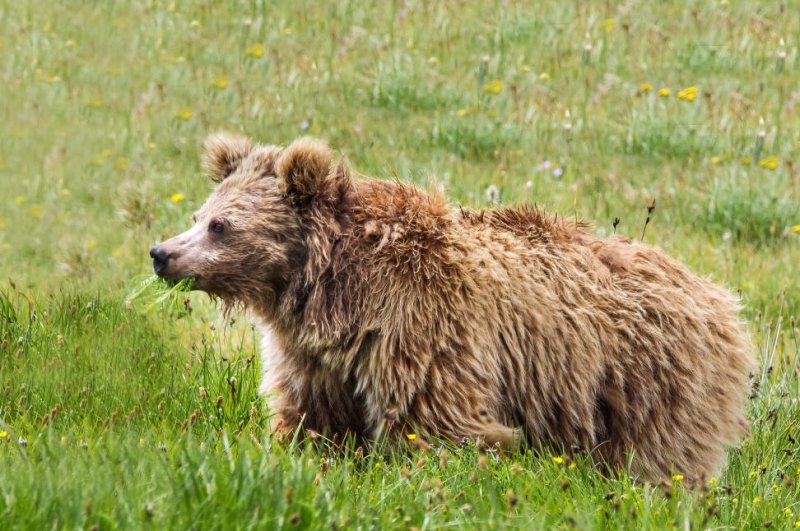The Himalayan brown accounted for one of the supposed Yeti samples. Photo by Abdullah Khan/Snow Leopard Foundation
Nov. 29 (UPI) -- New genetic analysis suggests Asian bears help explain the myth of the Yeti.
Several museums and private collections hold what is claimed to be physical evidence of the Yeti, or Abominable Snowman, the mythical human-like creature believed to lurk among the peaks of the Himalayas. Recently, scientists collected and analyzed DNA from the evidence, which included bone, tooth, skin, hair and fecal samples.
Their findings -- published this week in the journal Proceedings of Royal Society B -- failed to reveal a new genetic signature. Instead, the codes revealed the genetic markings of a dog and several Asian bears, including an Asian black bear, a Himalayan brown bear and six Tibetan brown bears.
"Our findings strongly suggest that the biological underpinnings of the Yeti legend can be found in local bears, and our study demonstrates that genetics should be able to unravel other, similar mysteries," Charlotte Lindqvist, an associate professor of biological sciences at the University at Buffalo, said in a news release.
Lindqvist suggests DNA analysis can help locate the scientific underpinnings of mythical creatures important to other cultures.
The "dreamtime" mythologies of aboriginal people in Australia feature stories of larger-than-life creatures. Some scientists believe some of these inherited stories may have been inspired by real-life experiences -- cultural relics of a past when humans and megafauna lived together on the island continent.
Rumors of an "African unicorn" sparked the interests of Europeans in the 19th century. Ultimately, scientists discovered the mythical creature to be an okapi, a relative of the giraffe with a zebra-like appearance.
Lindqvist isn't only interested in explaining natural legends -- she's also keen on understanding the evolution of Asian bear species.
"Bears in this region are either vulnerable or critically endangered from a conservation perspective, but not much is known about their past history," she said. "The Himalayan brown bears, for example, are highly endangered. Clarifying population structure and genetic diversity can help in estimating population sizes and crafting management strategies."
As part of their research into the origins of the Yeti, scientists sequenced the mitochondrial DNA of several Asian bear species and compared their results to the genomes of bears around the world. The results showed Tibetan brown bears share common ancestors with bears of North America and Eurasia.
The Himalayan brown bear, on the other hand, belongs to a unique lineage that diverged from all other brown bears some 650,000 years ago. The growth of glaciers may have isolated the lineage from other populations.
"Further genetic research on these rare and elusive animals may help illuminate the environmental history of the region, as well as bear evolutionary history worldwide -- and additional 'Yeti' samples could contribute to this work," Lindqvist said.















